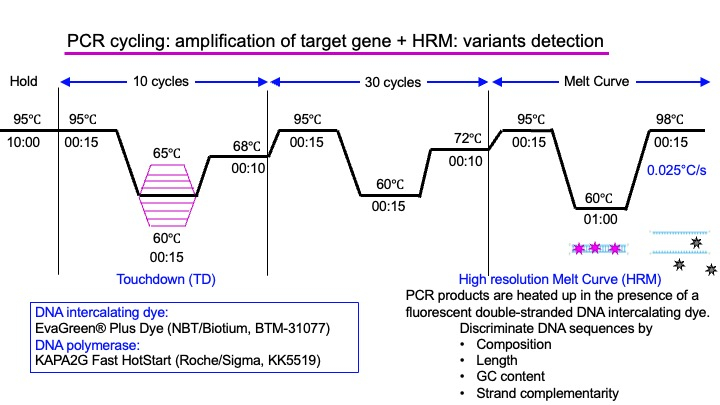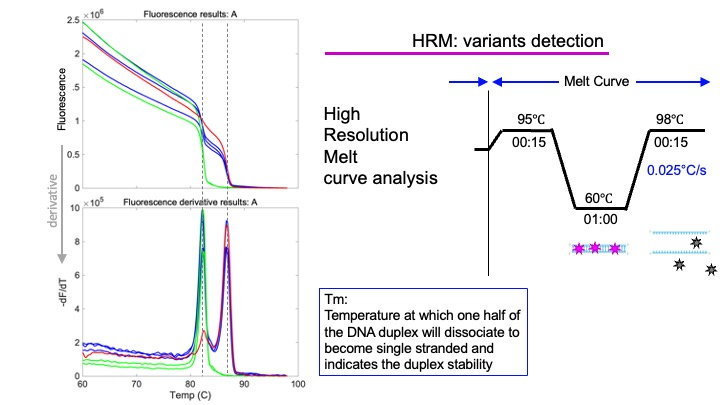Touchdown PCR
TD PCR offers a simple and rapid means to optimize PCRs, increase specificity, sensitivity and yield, without the need for lengthy optimizations.
TD-PCR employs an initial annealing temperature above the projected melting temperature (Tm) of the primers being used, then progressively transitions to a lower, more permissive annealing temperature over the course of successive cycles (0.5-1.0°C per cycle over the 5-10 first cycles). Any difference in Tm between correct and incorrect annealing will produce an exponential advantage of twofold per cycle.
Reference: Korbie DJ, Mattick JS. 2008. Nat Protoc 3(9):1452-6.
High Resolution Meltcurve (HRM) curve analysis
HRM analysis can discriminate DNA sequences based on their composition, length, GC content, or strand complementarity. In HRM, DNA samples are still amplified by PCR, but following amplification, the products are not run on an agarose gel. Instead, they are heated up in the presence of a fluorescent double-stranded DNA intercalating dye, such as EvaGreen®. Each product dissociates – or “melts” - at a characteristic temperature. Melting releases the intercalating dye, producing a decrease in fluorescence. The change in fluorescence is then plotted against temperature (-dF/dT). Each genotyping variant is expected to produce distinct Tm or pattern.
Key reagents
EvaGreen® Plus Dye (Biotium, BTM-31077; NBT)
KAPA2G Fast HotStart (Roche, KK5519; Sigma/Merck)


